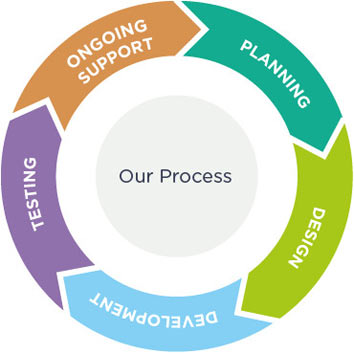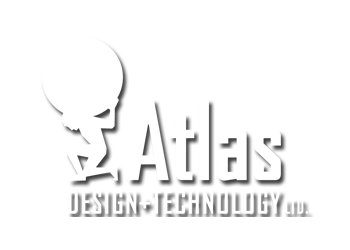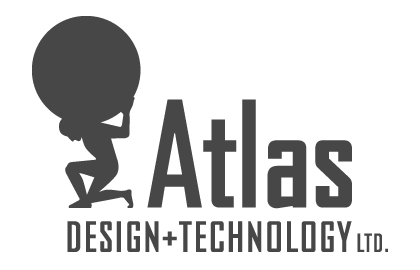
What We Do
Web Development and Programming
Cost-Effective Expertise and Experience
Atlas Design + Technology provides web design and development, software, hosting and maintenance services. Our experience and dependability, combined with our friendly, professional approach have helped us sustain and grow long-term relationships with our clients and partners since 1997.
CUSTOM WEB-BASED SOFTWARE
Development using PHP / MySQL
Solutions include Content Management Systems, Billing, Subscriptions and Memberships, Shopping and Commerce, Event Calendars and Registration, Article Publishing Tools, Geocoding and Routing, Advertisement Systems, Campaign Builders, Social Media Integration, Surveys and Forms, and much more.


Our Process
Client Briefing
The objective of the initial briefing exercise is to ascertain the business objectives, major functions, issues, and intended timelines of the project. The output of this phase will determine Atlas’s suggested approach to the following 3 phases.
Consulting
The Consulting phase allows Atlas to provide you with advice, analysis, and recommendations on your objectives, and the most efficient ways to realize these objectives.
Consulting may include the following activities:
- Development of ‘Central Client Objective’
- High level analysis of proposed feature set
- High level technical feasibility analysis
- Analysis of potential project and technical risks
- Analysis of Return on Investment across proposed feature set
- Definition and Analysis of user groups
- Brand Strategy and Consulting
- Competitor Audit and Analysis
- Site taxonomy and information architecture
- Online Marketing and audience generation strategies
- Identification of additional opportunities not recognized by client
This phase may be optional depending on the level of exploration already undertaken for a given project.
Scoping
The Scoping phase defines the scope (but not the detail) of what will be developed in the following phases of the project.
Having completed the work involved in the Consulting phase, Scoping determines how the features will be broken up into manageable ‘releases’, allowing us to reevaluate your strategy at the end of each release. The Scoping phase results in a document which is reviewed and approved before moving into Requirements Development.
Requirements Development
Once the scope of the project (or the first release of the project) has been clearly identified, the Requirements Development phase can begin. The Requirements document essentially delivers a checklist of requirements that the final system will fulfill. These requirements relate to functional, creative, and technical requirements of the system and are individually identified so that every piece of future work can be traced back to a particular requirement.
Since requirements actually define all elements of the system to be built, it is essential that the right people from your team are involved. Normally this will include some representation from the end user group. This phase involves a series of workshops with your Project Team and individual meetings with key business representatives.
Functional Specification
Once the requirements are gathered it should be possible to develop the functional design of the system. The Functional Specification defines all of the user and system interfaces required. Each functional requirement is addressed within this specification. The specification is complete when it can be shown to meet all of the requirements. On completion and sign-off of the Functional Specification, a functional test plan is developed. This plan consists of a number of test scripts which detail a series of actions and verification points to exercise every item of functionality.
In parallel with this work the initial site designs are generated from the creative requirements.
Technical Specification
The Technical Specification details the architecture and how the functionality will be created. The site is normally defined as a series of modules with few dependencies. This allows an easier division of the work, reduces the impact of software bugs between different modules, and produces a system that is more resilient to future changes. The Technical Specification also defines the site infrastructure (hardware and software).
Technical testing plans are created towards the end of this phase. These address performance, redundancy, and security testing procedures.
Page design templates are created in parallel with the technical specifications.
Development
It is not until the Development phase that any coding is undertaken. Since software bugs can only be created through flaws in the Development phase the objective of all previous phases has been to make this phase as simple as possible with the least margin for error.
The Development phase creates all the software modules defined in the Technical Specification and tests that the individual module works as defined.
Testing
Although the Testing phase is towards the end of the project life cycle it is important to note that a considerable amount of testing has been conducted before reaching this point. The testing phase specifically performs functional and technical testing as defined in the earlier phases. Atlas will also undertake deployment testing, to ensure that system deployment process is robust.
Deployment
The Deployment phase takes the completed site to the live environment, and performs final testing on this environment.
In addition, the deployment phase may involve Atlas developing advertising and marketing campaigns, and beta or pilot testing with a select group of end users.
Site traffic will also be monitored closely during this phase in order to validate assumptions made in the selection of the site infrastructure (additional hardware may be required if traffic is higher than expected).
Lessons learned on completion of this phase should be provided as input to following releases of the site.
We use a unique, structured and scalable methodology developed over years of working in the interactive space. It is centered around integrating good technical and creative design, with progress reviews and measurable deliverables.


